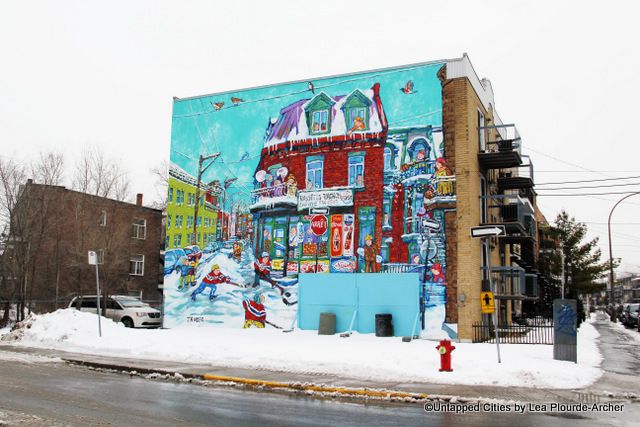Last Chance to Catch NYC's Holiday Notalgia Train
We met the voices of the NYC subway on our nostalgia ride this weekend!


On a nondescript street corner in the district of Verdun, it’s hard not to notice the colorful mural that pops out among the dreary buildings of the area. It was here in the Fall of 2012 that a non-profit organization by the name of MU produced a mural that pays tribute to the work of painter Miyuki Tanobe. The mural is a 1,400 square foot reproduction of a painting that was created by the artist herself, as commissioned by MU. It is one of a number of murals that have been installed in last few years to honor the artists who have become mainstays in Montreal’s cultural history.
Miyuki Tanobe was 34 when she first came to Montreal. Already an accomplished painter, she’d studied the skill for many years at prestigious art schools in Japan, France, Greece and Africa before settling down here in 1971. Despite her travels, it was here that Tanobe found a permanent home and an endless source of inspiration for her art.
Known for her observation paintings of everyday life, Tanobe adopted Montreal and the city’s population as her muse for the next two decades. As viewed through her eyes, the city is a lively place where public spaces serve as the set for endless human interactions and mundane yet comical events. Tanobe’s style of painting could be described as Naive art, because she tends to favor simple shapes and bright colors. However, as basic as her content may be, her creative process is extremely complex and time consuming.
Starting at the age of 11, she was trained in the Nihonga style, which is a traditional Japanese form of painting. The first step in the long process of creating this type of picture is to draw the initial sketch of the scene. Afterwards, Tanobe outlines the key elements of the picture with Sumi (Chinese ink obtained by rubbing a bar of solid ink in water). The next step is to add multiple layers of colors. She uses iwa-enogu paints, which she makes by mixing pulverised mineral pigments with water and glue.
City life is often represented with much cynicism. In contrast, Tanobe’s work is a breath of fresh air because she tries to showcase the effervescent community life present in certain neighborhoods, which is built on human warmth and connections.
A few years ago, Miyuki Tanobe moved to the small town of Saint-Antoine-de-Richelieu, an hour away from Montreal. Nowadays, she prefers to paint nature and the interactions happening within the small community there. Nevertheless, her paintings continue to generate much praise in Montreal and have become a part of the city’s visual history. Besides the mural, her works are also on display in a number of random spots in Montreal (like the Fairmount Bagel Bakery), as well as in many museums and galleries in the city and around the world.
For more information on Miyuki Tanobe’s painting process and inspirations, check out this 1979 documentary, produced by the National Film Board of Canada.
My Floating World: Miyuki Tanobe by Ian Rankin by Stephan Steinhouse & by Marc F. Voizard, National Film Board of Canada
Get in touch with the author @ModStoryteller.
Subscribe to our newsletter